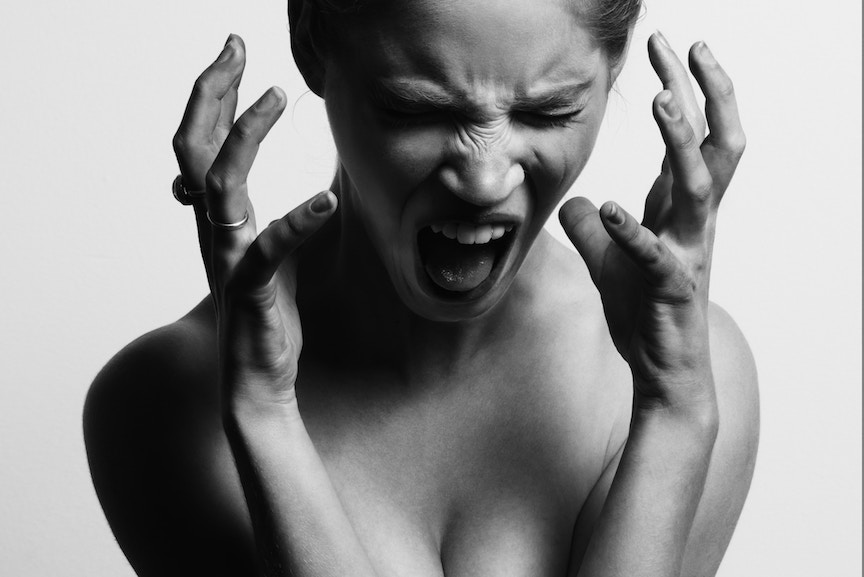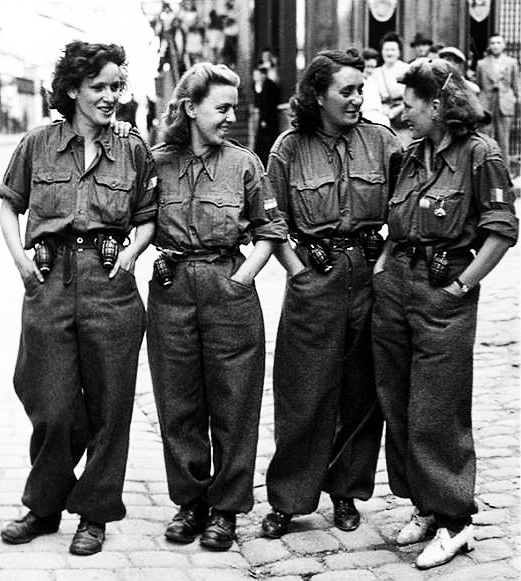
BLOG
Taboo vaccines and fear inoculations
She looked down at the screaming woman’s face and instantly felt her stomaching tightening up into a tense little knot.
The fierce and wild expression seemed out of place with all of the softer pictures and words in her collage.
Like someone else had stuck it there by accident, or worse, glued it there intentionally to make her sick.
Over the last few weeks I’ve done four vision board workshops and spoke with dozens of women about what they see in their collages.
Each collage is made up of cut-out images and words that my clients choose quickly and then edit and arrange on their boards with care.
When the collages are all done and everyone has started talking about the lovely things they see in their boards, I shift speed and throw out a doozy of a question.
What part of the collage makes you feel uncomfortable?
That was the question I asked that led us to “the scream.”
The question hits hard, especially since all of the other questions are as sweet and cuddly as a basket full of puppies.
It’s my favorite question. (And no, I’m not a sadist.)
So, why do I love that question so much?
She looked down at the screaming woman’s face and instantly felt her stomaching tightening up into a tense little knot.
The fierce and wild expression seemed out of place with all of the softer pictures and words in her collage.
Like someone else had stuck it there by accident, or worse, glued it there intentionally to make her sick.
Over the last few weeks I’ve done four vision board workshops and spoke with dozens of women about what they see in their collages.
Each collage is made up of cut-out images and words that my clients choose quickly and then edit and arrange on their boards with care.
When the collages are all done and everyone has started talking about the lovely things they see in their boards, I shift speed and throw out a doozy of a question.
What part of the collage makes you feel uncomfortable?
That was the question I asked that led us to “the scream.”
The question hits hard, especially since all of the other questions are as sweet and cuddly as a basket full of puppies.
It’s my favorite question. (And no, I’m not a sadist.)
So, why do I love that question so much?
What we recoil from and find irritating, repulsive or just flat out unacceptable (mostly in others) is the proverbial “pot of goal” of personal development.
It helps us uncover a desire or need that seems totally off-limits to us. Unauthorized. Unorthodox. Taboo.
Watching others nonchalantly behave in that taboo way feels like nails across a chalkboard. Just plain wrong!
But, you want what, it’s not about them, it’s about you.
The reason that image or behavior shocks us is because we need a little bit of it in our lives. Let me explain.
Like a vaccine shot to protect us from getting deathly ill, we need a little bit of what repulses us to balance out the rest.
What we can’t stand in others is what we’re missing (to a certain degree) in ourselves.
Here are some examples:
Repulsion: That “pretentious snob” of a co-worker who’s loud and outspoken in meetings even though his ideas are so basic and boring.
Vaccine: Accepting imperfection.
Next steps Don’t kill your ideas before they’ve hatched. Share them even when you’re not 100% convinced others will appreciate them.
Repulsion: That “selfish” and “insensitive” friend who always arrives late. Always. And never apologizes for it.
Vaccine: Living in the present.
Next steps: What’s most important to you right now? If there were no consequences to any of your decisions, what would you decide to do?
Repulsion: That “rigid” co-worker who’s “inflexibility” and “hesitation” keeps everything stuck in standstill.
Vaccine: Slowing down the process.
Next steps: What would happen if you slowed down the process and embraced the journey without racing to the destination?
You see where I’m going with this?
Now let’s get back to that screaming face in the first sentence of this post. What did my client find so repulsive about it?
As a new entrepreneur starting out in the wellness business, it was a reminder of how scared she is about speaking publicly about her new profession and how terrified she is that she’ll never get over her insecurities.
What she realized during the workshop was that the scream symbolizes brazenness, intensity, determination. The exact qualities, in vaccine-size-doses, that she needs to develop in order to live off of what she loves.
It boils down to identifying (and accepting), rather than reacting to and recoiling from what makes us uncomfortable, like the dragons in this famous Rainer Maria Rilke quote:
“How could we forget those ancient myths that stand at the beginning of all races—the myths about dragons that at the last moment are transformed into princesses. Perhaps all the dragons in our lives are princesses who are only waiting to see us act, just once, with beauty and courage. Perhaps everything that frightens us is, in its deepest essence, something helpless that wants our love.”
Where does this mean for you?
Next time you have a strong reaction/repulsion to someone’s behavior, move beyond the “EEK” feeling and try and see what bothers you so much.
What has this person allowed themselves to do/be that offends you so much ?
When you peel back the onion, what permission in its purest form is at the root of their behavior (honesty, spontaneity, self-love )?
What vaccine-size-dose of that permission could you inject yourself with?
What one thing could you try differently now that you’ve been inoculated?
Keep me posted on what you uncover, and if you want to go further and tackle some more of taboos, reach out and book a call with me.
Photo by Gabriel Matula on Unsplash
Tools in Your Pockets
Pockets. They’re designed to keep useful tools close by. Against the body. Like an appendage. So that when you need to jot something down. Remember a task. Fix something. Hold something for later. You don’t have to scramble around like a basket case trying to find it.
Or rely on someone else for help.
In short: they help you be better at being you.
Up until the French revolution women had large pockets tucked under their voluminous skirts that were large enough to hold books, mending materials, writing devices, and even lunch.
But as fashion became more streamlined, women’s pockets moved off the body and into handbags.
More distant. Easier to misplace. Or have stolen. Making essential tools harder to find and more difficult to access in need.
“Pockets speak to this question of preparedness, and your ability to move in public and to be confident. It’s really difficult to get around if you don’t have what you need, and it’s about, I think it’s about mobility and movement in public,” says Hannah Carlson, a lecturer at the Rhode Island School of Design who was interviewed about the politics of pockets in the awesome podcast, Articles of Interest.
So what do pockets have do you with you?
Pockets. They’re designed to keep useful tools close by. Against the body. Like a second skin. So that when you need to jot something down. Remember a task. Fix something. Hold something for later. You don’t have to scramble around like a basket case trying to find it.
Or rely on someone else for help.
In short: they help you be better at being you.
Up until the French revolution women had large pockets tucked under their voluminous skirts that were large enough to hold books, mending materials, writing devices, and even lunch.
But as fashion became more streamlined, women’s pockets moved off the body and into handbags — more distant, easier to misplace, or have stolen.
Making essential tools harder to find and more difficult to access in need.
“Pockets speak to this question of preparedness, and your ability to move in public and to be confident. It’s really difficult to get around if you don’t have what you need...” says Hannah Carlson, a lecturer at the Rhode Island School of Design who was interviewed about the politics of pockets in the awesome podcast, Articles of Interest.
So I guess you're wondering what pockets have do you with coaching?
Well, I’ve been thinking recently about the tools we need to move ahead with our projects.
Women often think they need to have everything mastered, integrated and assimilated into every fiber of their body in order to be legitimate, comfortable and prepared.
Maybe it has to do with the diminishing size of pockets over time and the growing sense that men are better equipped for the challenges of the world than we are.
Who knows.
But what interests me is this question: What tools do you need to get you where you want to go with confidence and ease?
And when I say "tools" I'm not talking about hammers and nails and mending materials, in fact your tools don't have to be objects at all!
A client of mine recently described an "immaterial toolkit" that she created to collect “things” she knows are good for her as she journeys forward.
Friendships where she can be vulnerable and real
Rituals that bring her immense joy
Experiences that spark curiosity and enable growth
Mindsets that are benevolent and constructive
They’re all tucked away in her toolkit — safe, cosy and close. Carefully selected for the precious vitality they bring her.
Once you know where you’re going, the next step is to choose the tools you need to help you get there. Venturing out ill-equipped just sets you up for pain and a whole lotta trouble.
You wouldn't head into the forest for an overnight in the wild without a compass, a sleeping bag, and some coffee for the morning after, right? That would be bonkers.
So tell me, what tools do you want to put in your pockets to get you where you want to go?


